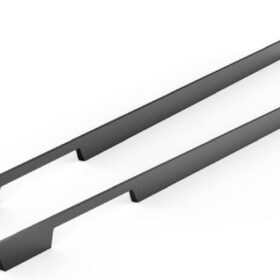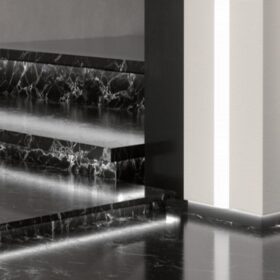The Environmental Impact of Various Kitchen Cabinet Edge Pull Materials
In the culinary realm of kitchen design, where aesthetics and functionality intertwine, the choice of cabinet edge pull materials plays a crucial role. Beyond their aesthetic allure, these materials carry significant environmental implications that warrant exploration.
Wood: A Classic with Carbon Sequestration
Wood, a timeless choice for kitchen cabinetry, boasts inherent sustainability. As a natural material, it absorbs and stores carbon dioxide throughout its life cycle, contributing to the mitigation of climate change. Sustainable forestry practices ensure that wood is sourced responsibly, reducing the ecological impact.
Metal: Durability with Environmental Drawbacks
Metal, renowned for its durability and modern aesthetic, presents both advantages and disadvantages. While certain metals, such as stainless steel, are highly recyclable, the manufacturing process involves significant energy consumption and emissions. The extraction of raw materials, particularly for aluminum and brass, can also have negative environmental consequences.
Plastic: Versatile but with Sustainability Concerns
Plastic, an affordable and versatile material, offers a wide range of customization options. However, it is crucial to recognize the environmental concerns associated with plastic. Traditional plastics do not biodegrade and can accumulate in landfills, posing a threat to ecosystems. Biodegradable plastics, while a promising alternative, are still in their early stages of development.
Ceramic: Durability and Energy Efficiency
Ceramic, known for its exquisite finish and resistance to wear and tear, is an energy-efficient choice. Its production requires less energy than other materials, and it is often made from recycled materials. However, the mining of raw materials can have environmental impacts.
Glass: Elegance with Sustainability Challenges
Glass, with its translucent beauty and ability to reflect light, adds a touch of elegance to kitchens. However, its production involves high energy consumption and emissions. Additionally, the disposal of glass can be challenging due to its brittleness and potential for landfill contamination.
Choosing an Eco-Friendly Option
When selecting kitchen cabinet edge pull materials, consider their environmental impact. Opt for sustainable materials such as wood, explore recycled options like metal, and embrace innovative materials such as biodegradable plastics or environmentally friendly ceramic. By making informed choices, we can create kitchens that not only look beautiful but also respect the planet.
-
2024-11-29Top Trends in Modern Kitchen Cabinet Pulls for 2024
-
2024-11-28The Ultimate Guide to Modern Kitchen Cabinet Pulls- Materials, Styles, and Tips
-
2024-11-27Elevate Your Kitchen Design with These Must-Have Modern Cabinet Pulls
-
2024-11-26Sleek and Stylish- The Best Modern Kitchen Cabinet Pulls for a Contemporary Look










